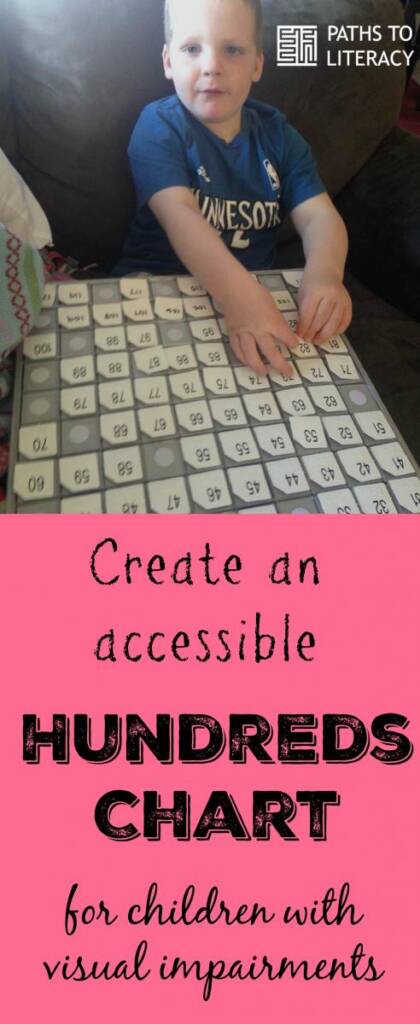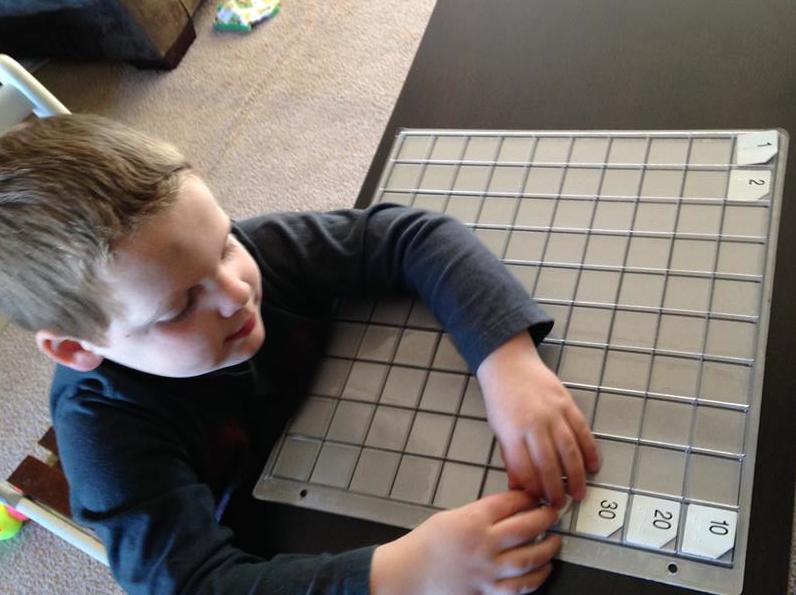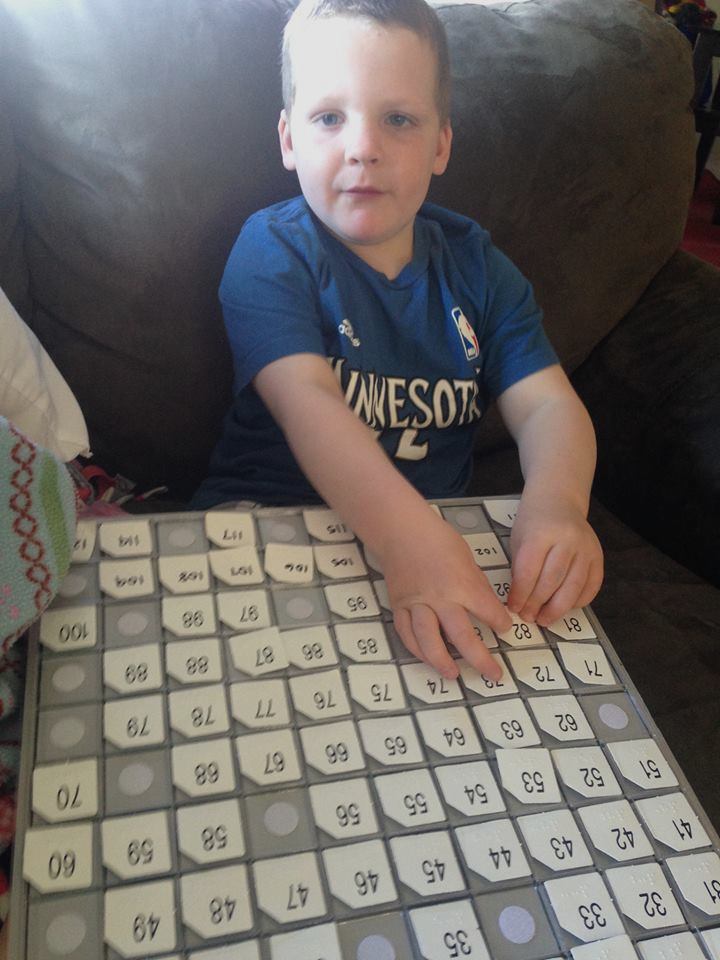My son Liam is a braille reader who attends first grade in a mainstream classroom. He often gets homework home and I would like to share one of the assignments that he brought home recently.
My son’s school uses 100’s charts to teach a lot of different concepts and also to use as a way to teach and support number sense. Liam’s Special Education teacher found this tactile 100’s chart for him from APH, so that he can participate in the 100 chart activities the same as his peers, but in a way that is accessible to him.
Materials
- The chart itself is made with raised lines and is very sturdy. Available from APH.
- The chart comes with brailled numbered squares 1-100.
- Liam’s team created brailled squares for numbers that were higher than 100 themselves.
- Liam’s team attached velcro pieces to the back of the pieces so that they would stay put.
- You can buy an empty 100’s chart or one with numbers that come separately. (Liam has both.)
Procedure
Here are some of the activities that Liam has done at school with his team and as homework as well:
- Find numbers on a completed 100’s chart. For example, his teacher may ask him to find the number 15 and Liam will then need to locate the number 15 on the chart and tap it with his finger.
- Skip counting: as pictured, Liam skip counting by 10’s
- Fill in the blanks: The chart can be partially filled out and Liam’s teacher will give Liam numbers to be added onto the chart and Liam has to find where they go.
- Most recently, Liam’s Special Education teacher had the 100 chart start with the number 21 going through 120 (as pictured). So Liam was able to complete the partially filled out 100’s chart with larger numbers.
There are really many benefits for using a 100’s chart! Other possible uses can be to use for multiplication, addition, subtraction, etc. What is really exciting to me is that the tactile 100’s chart makes it so that Liam can be working on the same activities as his peers in a way that is accessible to him.
Liam loves the 100’s chart; it is one of his very favorite homework activities to do as homework. One weekend he completed a partially filled 100’s chart about 6 separate times. ![]() He kept wanting more! I am always amazed with his number sense.
He kept wanting more! I am always amazed with his number sense.






